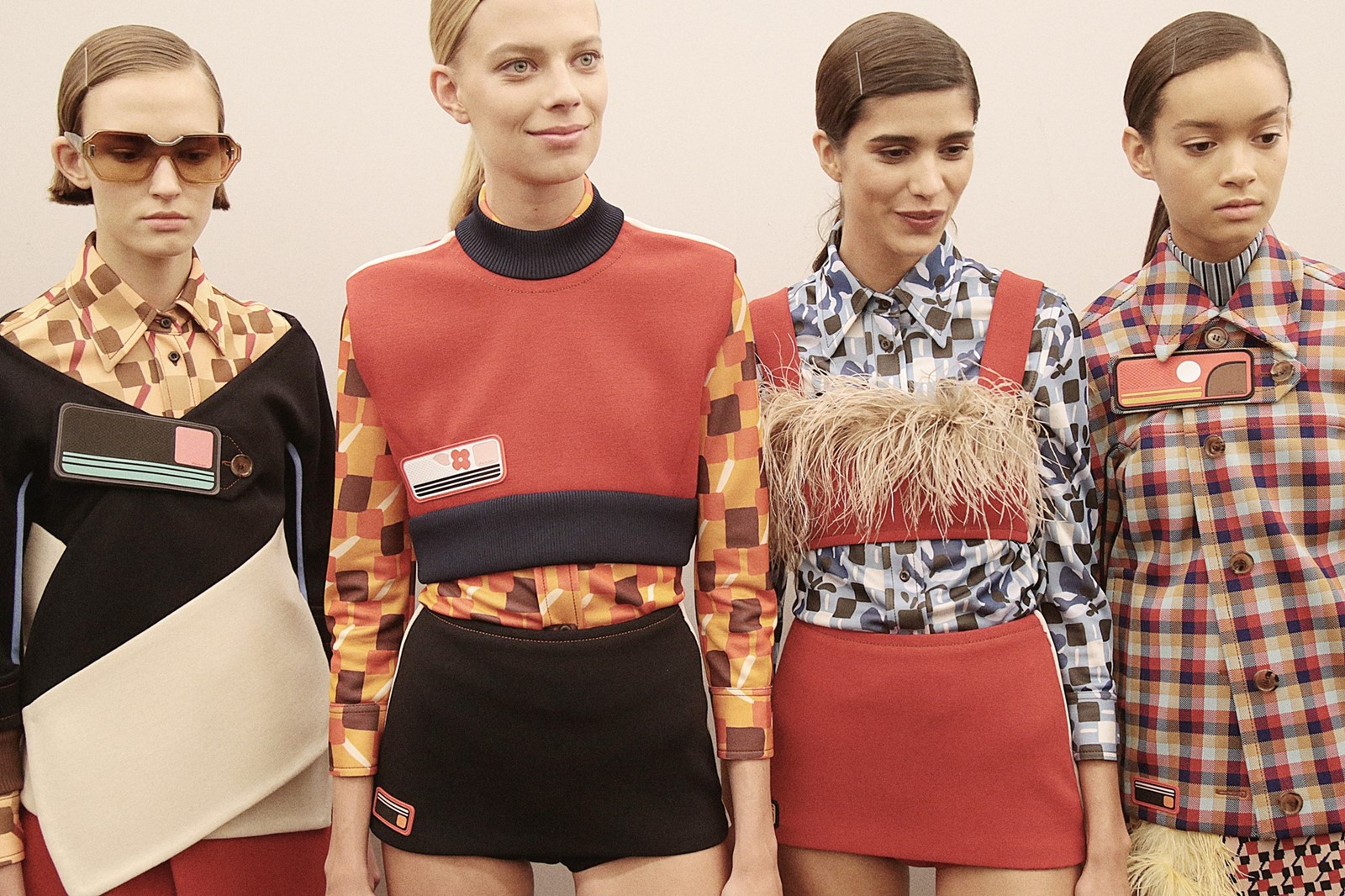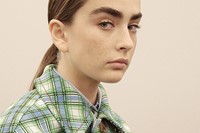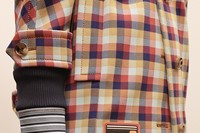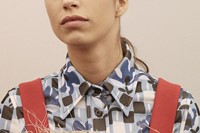Nobody could ever accuse Miuccia Prada of reductive themes. If ‘trends’ are even remotely relevant in contemporary fashion, which is debatable, she is not one to pander to them. Of course, this is a designer who has transformed our notion of beauty and influenced the way women – and indeed men – dress in a manner which extends far beyond her own customer base, and that is no small feat. Perhaps it is because she is preoccupied with grand ideas; the universal challenges of people’s lives, and women’s lives in particular.
For the past few seasons, this extraordinary creator has been absorbed with the history of women as they travel across the globe and through the ages. This time, though, as she said backstage, “I wanted to take care of now”. That is not to say that she disregarded her own history. Far from it. The title of her and director David O. Russell’s collaborative short film, spliced and shown on huge screens across an industrial runway, said it all: Past Forward. Miuccia Prada looked at the tropes that have become time-honoured signatures, and reinvented them. The result was as fresh and new as it was, for all its clarity and lightness, moving. As beautiful young girls walked a raised, pewter catwalk in blithely coloured clothes that appeared as easy to move in as they were lovely, an unparalleled complexity and intelligence emerged. In an uncertain world, love and fear were on Miuccia Prada’s mind, and the clothes were an empowering response to both. “I was thinking about something much more simple and trying to find a new sort of elegance,” the designer continued. “Elegance sounds like an old-fashioned word, but there’s also the sense of something meaningful, deep, cultivated.”
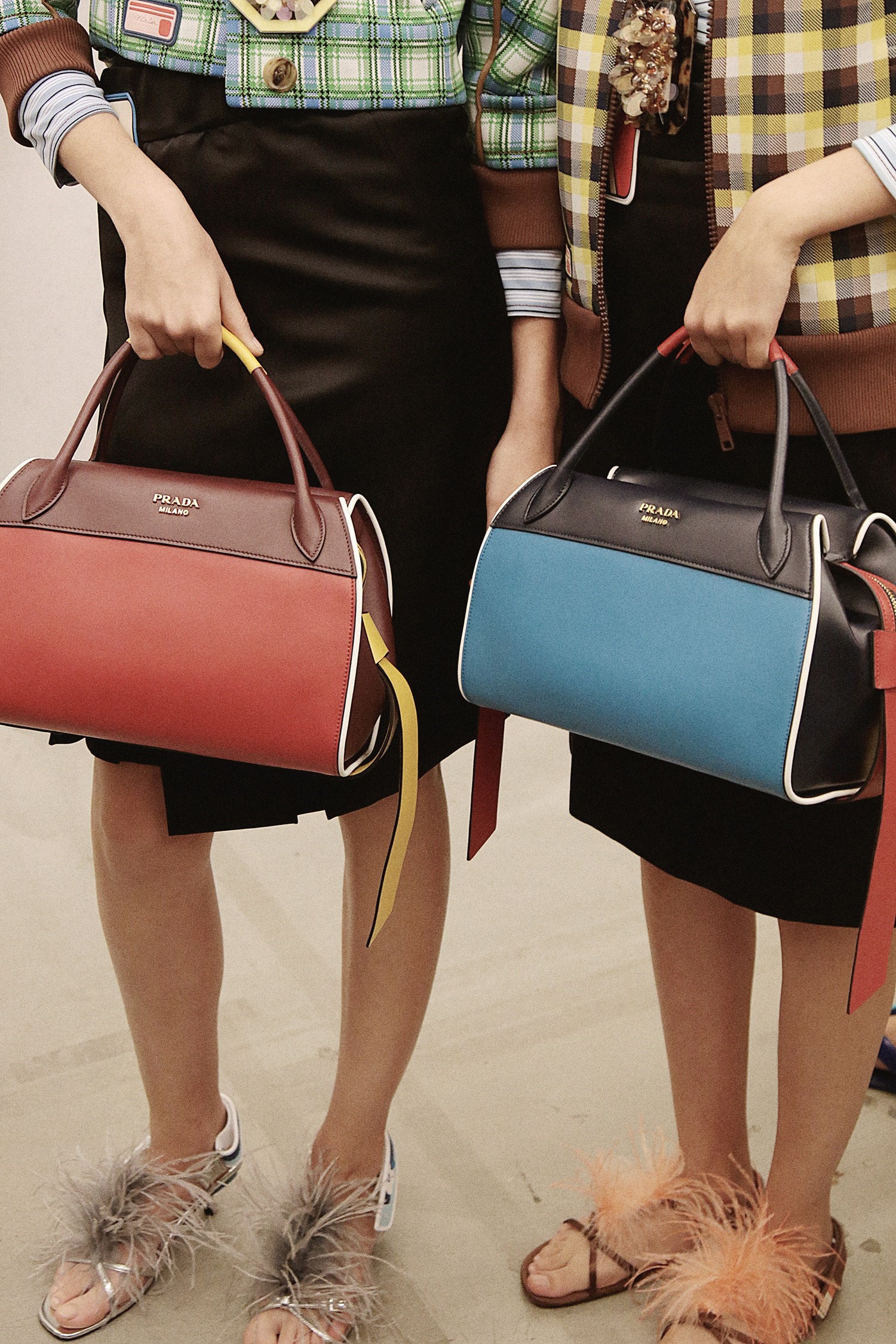
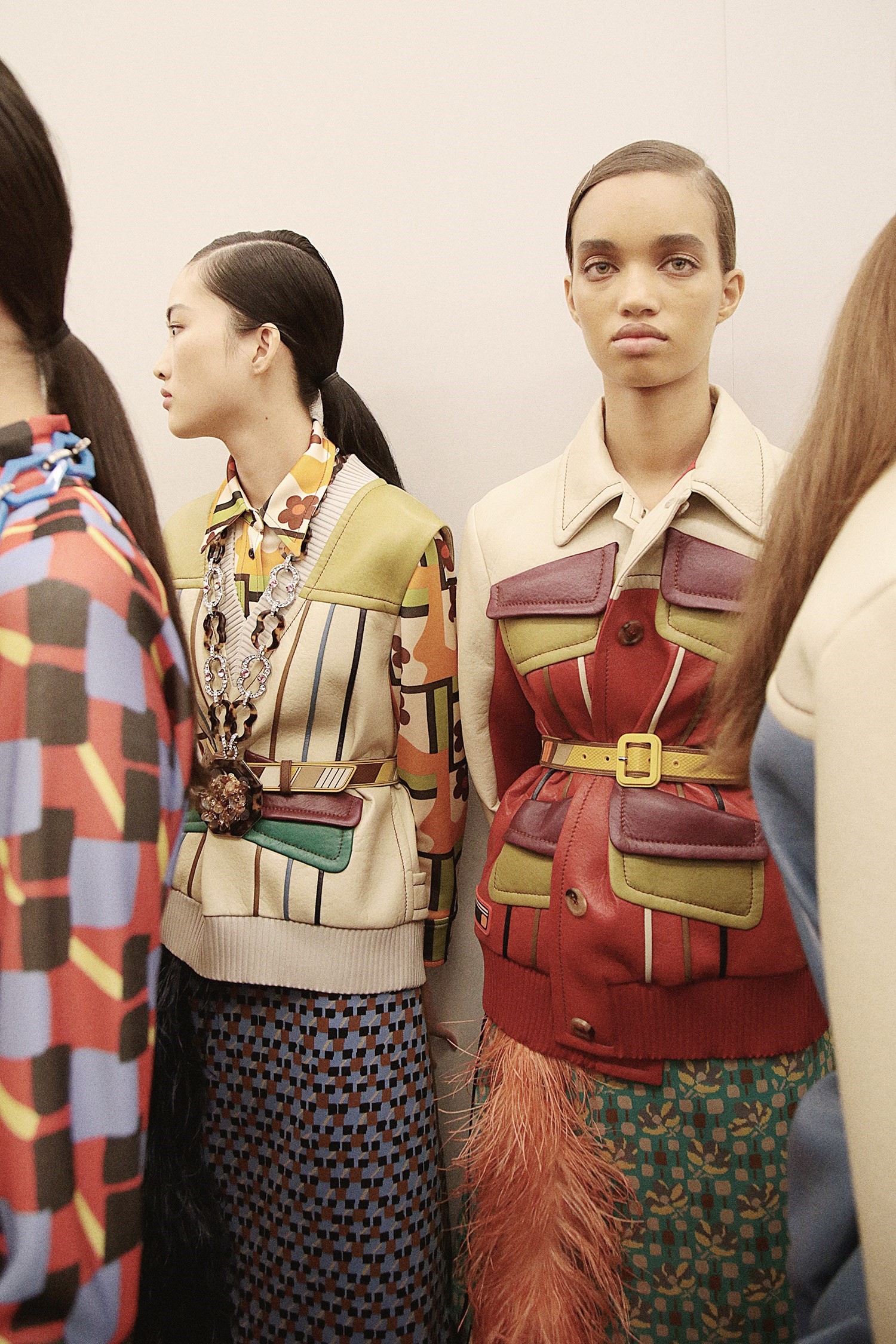
“Elegance sounds like an old-fashioned word, but there’s also the sense of something meaningful, deep, cultivated” – Miuccia Prada
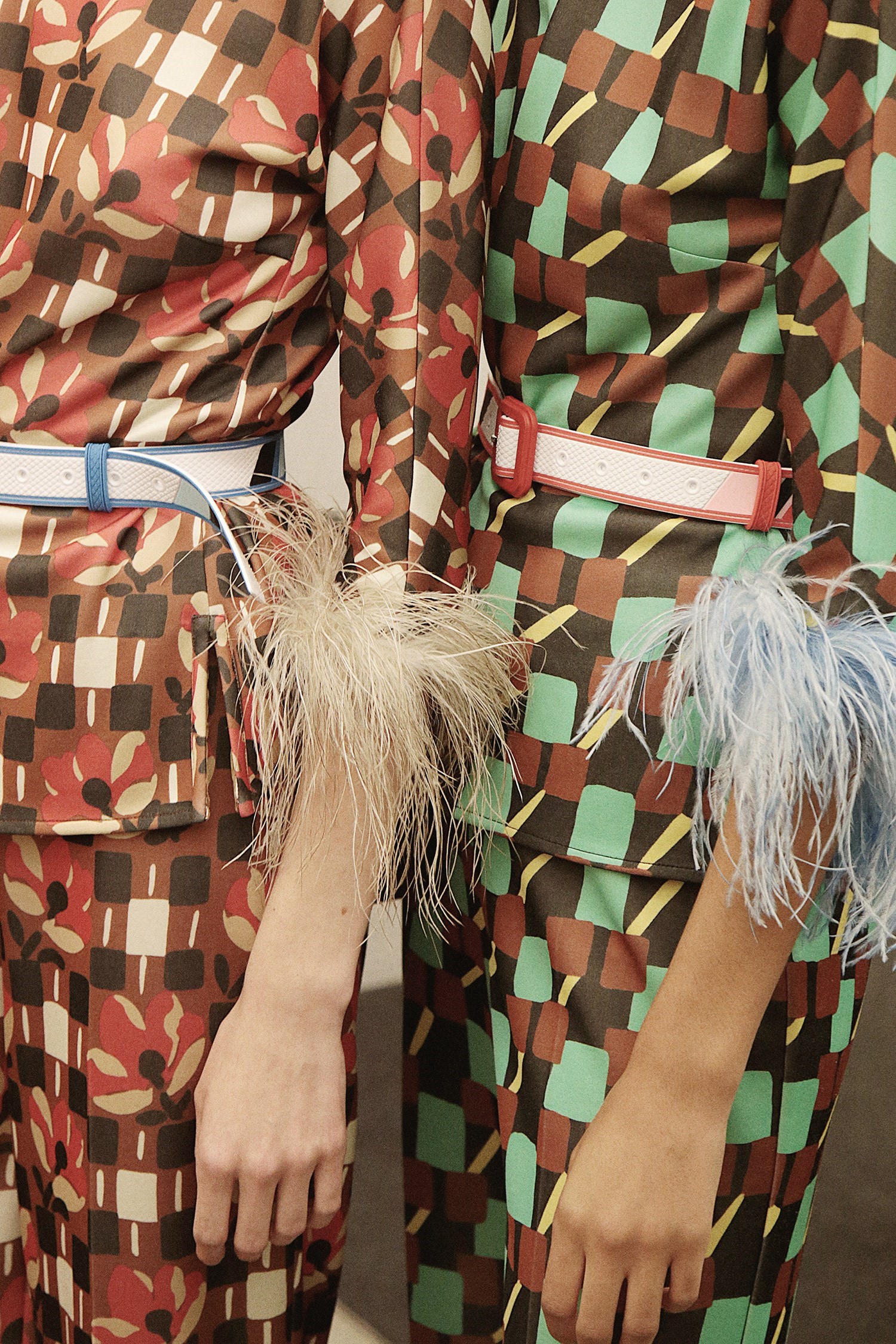
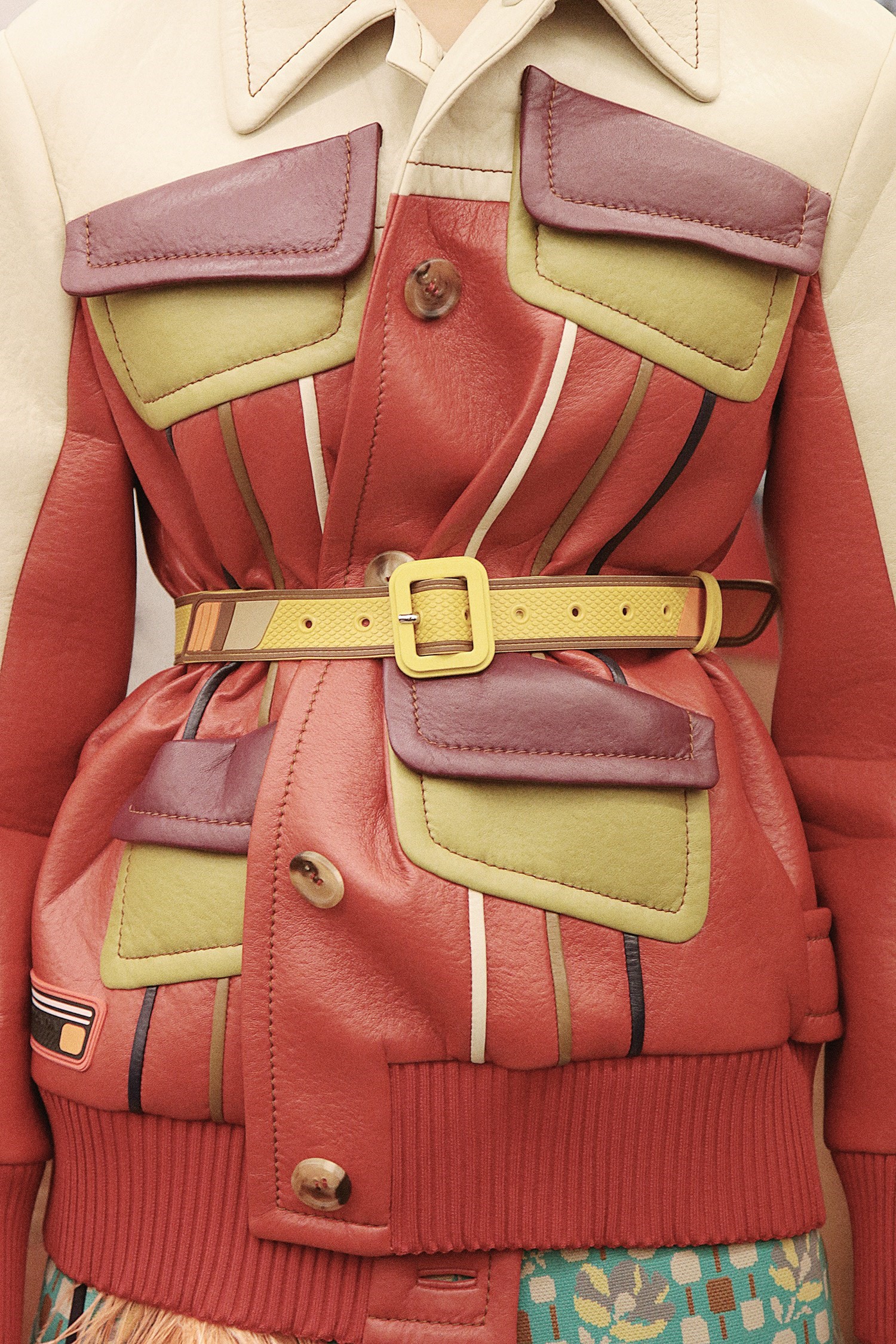
In the Beginning
There was a proudly utilitarian nylon backpack, an apparently straightforward idea which, in the late 1980s, put Prada firmly on the fashion map, and with it came nylon clothes in equally functional silhouettes. When I first met the woman behind this, she told me that one of the earliest reviews of her work described it as a merging of “The Jetsons and The Flintstones” – a comment unlikely to be intended as a compliment, but with which she was delighted. Suffice it to say that the accessory in question was the most visible symbol of an aesthetic that was in direct contrast to the prevailing jolie madame mood: studiously dowdy shapes borrowed from uniforms as diverse as schoolgirl and boy and soldier, while acrylics, and the colours black and, more surprising still, brown, dominated. Perhaps because it looked so different to anything else at that time, critics, struggling to understand it, identified Prada’s approach as “intellectual”, though the designer herself wisely shies away from that. The opening look of this latest show was in black Technostretch fabric: a tank and knee-length skirt belted with pink and red rubber. Perfectly simple. And just perfect.
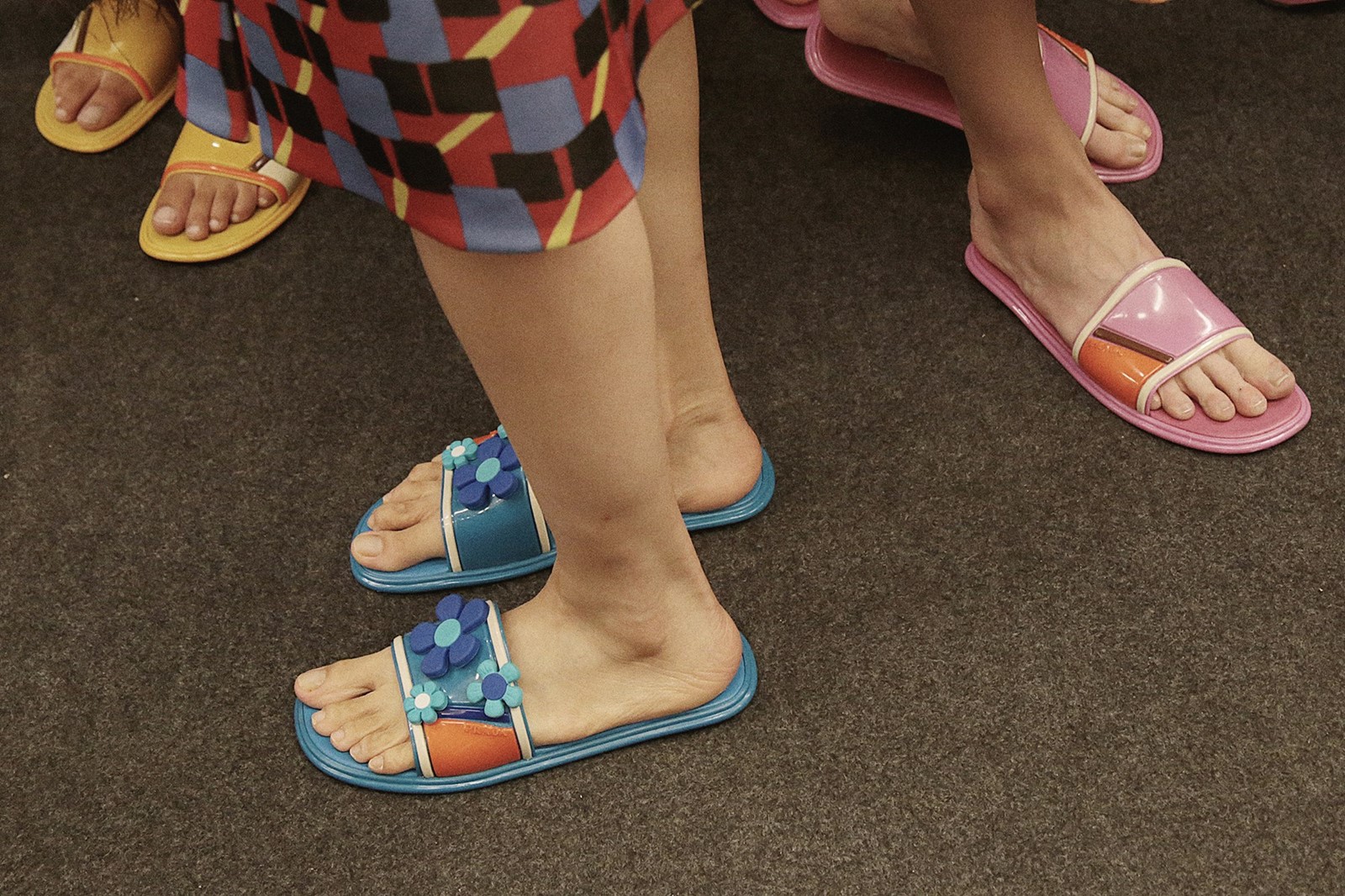
Then There Were Prints
In the mid-90s, Miuccia Prada delved further still into the belle-laide aesthetic (one that we have all come to learn from, and see simply as belle), and introduced what was at that time labelled as a 1950s-inspired Formica/American diner print into her vocabulary – a reference, also, to the 1970s and Art Deco. She has re-visited it on several occasions since and it crops up again this time around, re-coloured – turquoise, mustard, brown, shades of blue from duck-egg to navy and, of course, brown and pink – and mixed with naïve daisies, checks and stripes. The silhouette was streamlined: shirts buttoned up to the throat, straight skirts, patch-pocketed jackets worn with more rubber belts in shades that were typically jarring. The effect was clean, a fact which is all the more remarkable given that both pattern and hue were comparatively busy, and all the more uplifting for that.
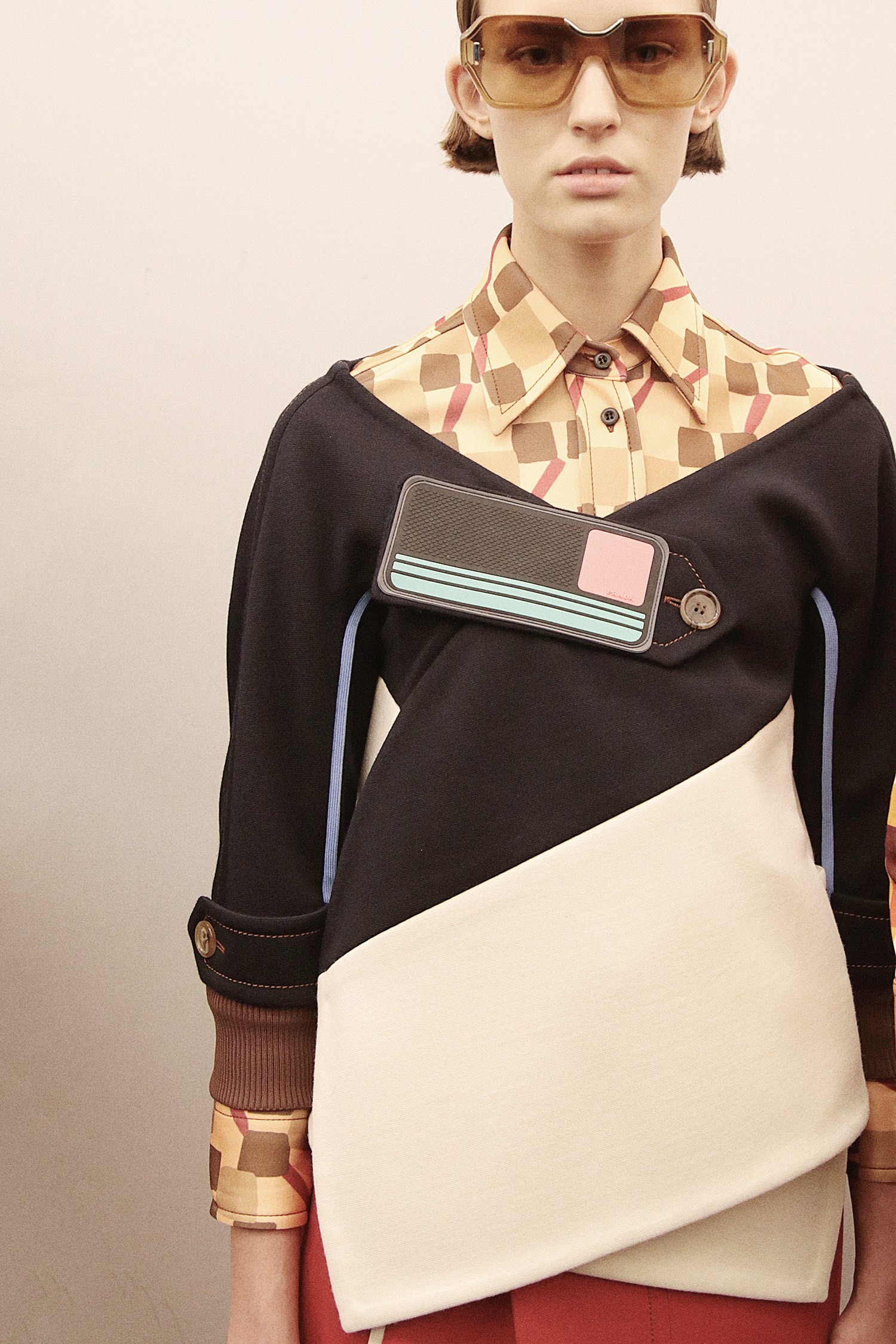
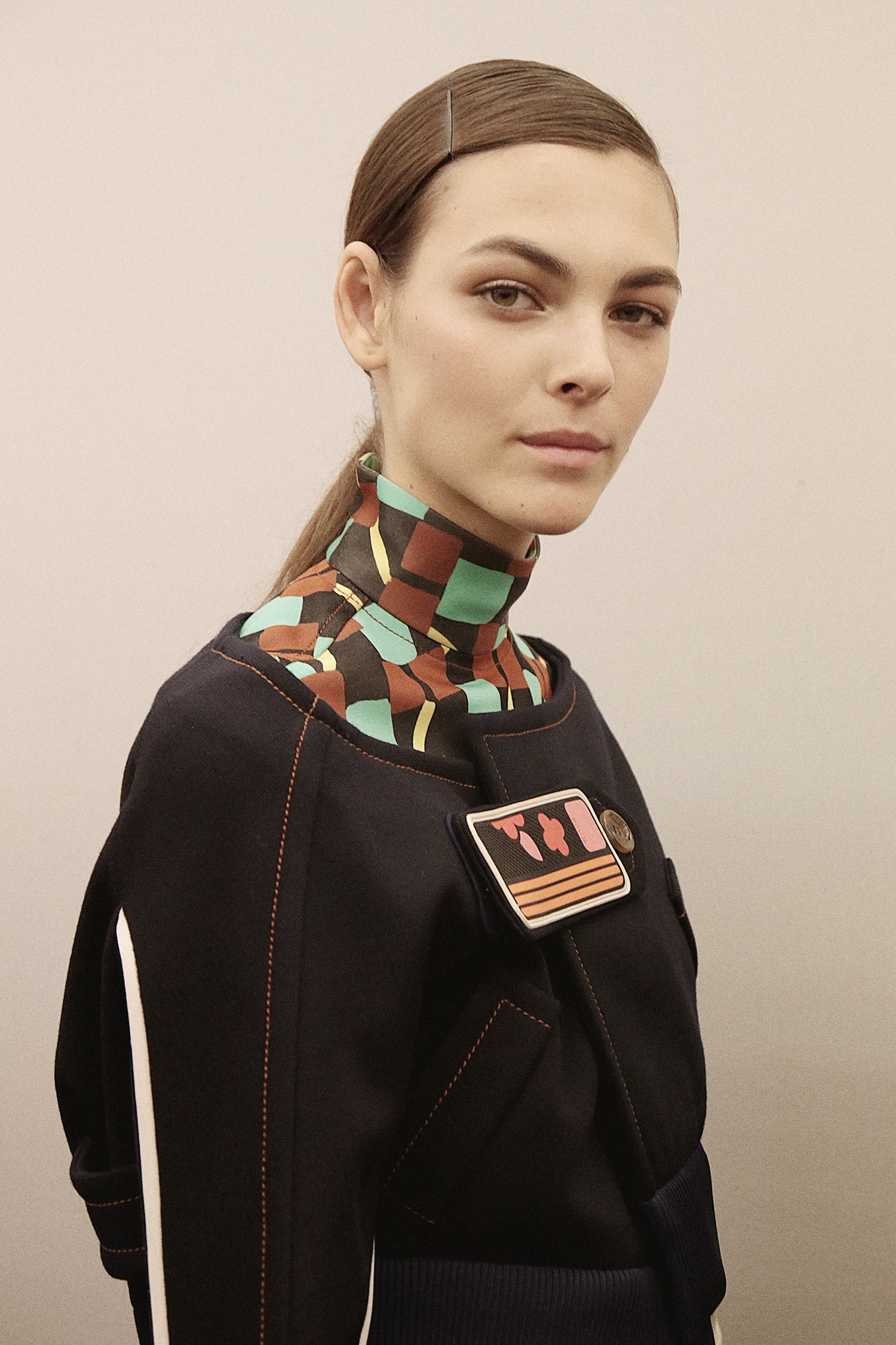
Let’s Talk About Sex
Always aware of the complexity of women’s lives, Miuccia Prada largely eschews conventional expressions of sexuality in women’s clothing. That’s not to say that she disapproves of the flashing of flesh – it’s just that, for the most part, her treatment of this huge subject is particularly subtle. For Spring/Summer 2017 there was nothing demure about the tiny shorts that more than whispered of mid-20th century pin-ups (again, she has looked at this before) worn with toned bare legs. They were dynamic, however, over and above pandering to the male gaze. In a similar vein, bra tops were worn over masculine shirting and skirts were split to the thigh but deliberately skewed, fastened with nothing more obviously alluring than Velcro.
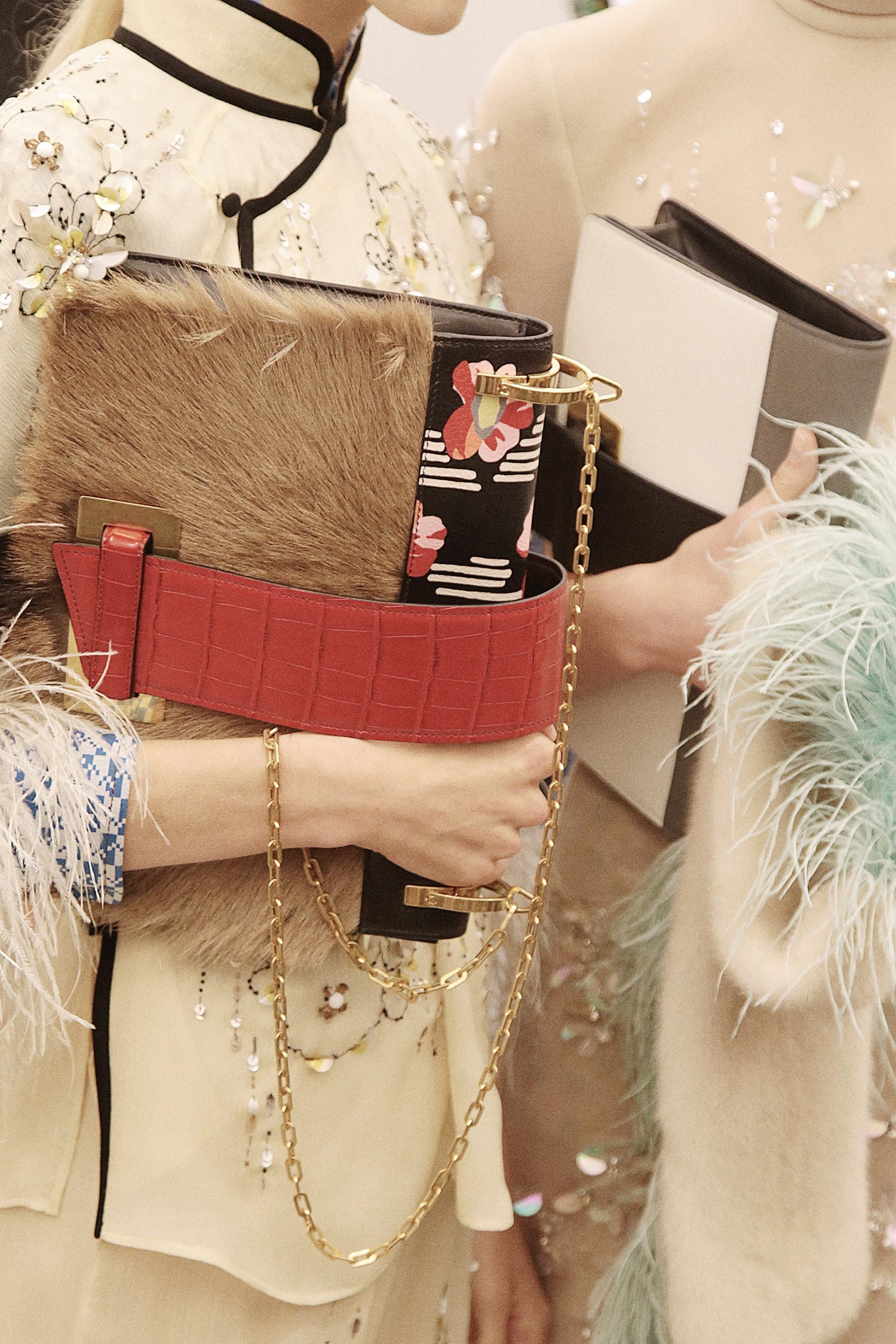
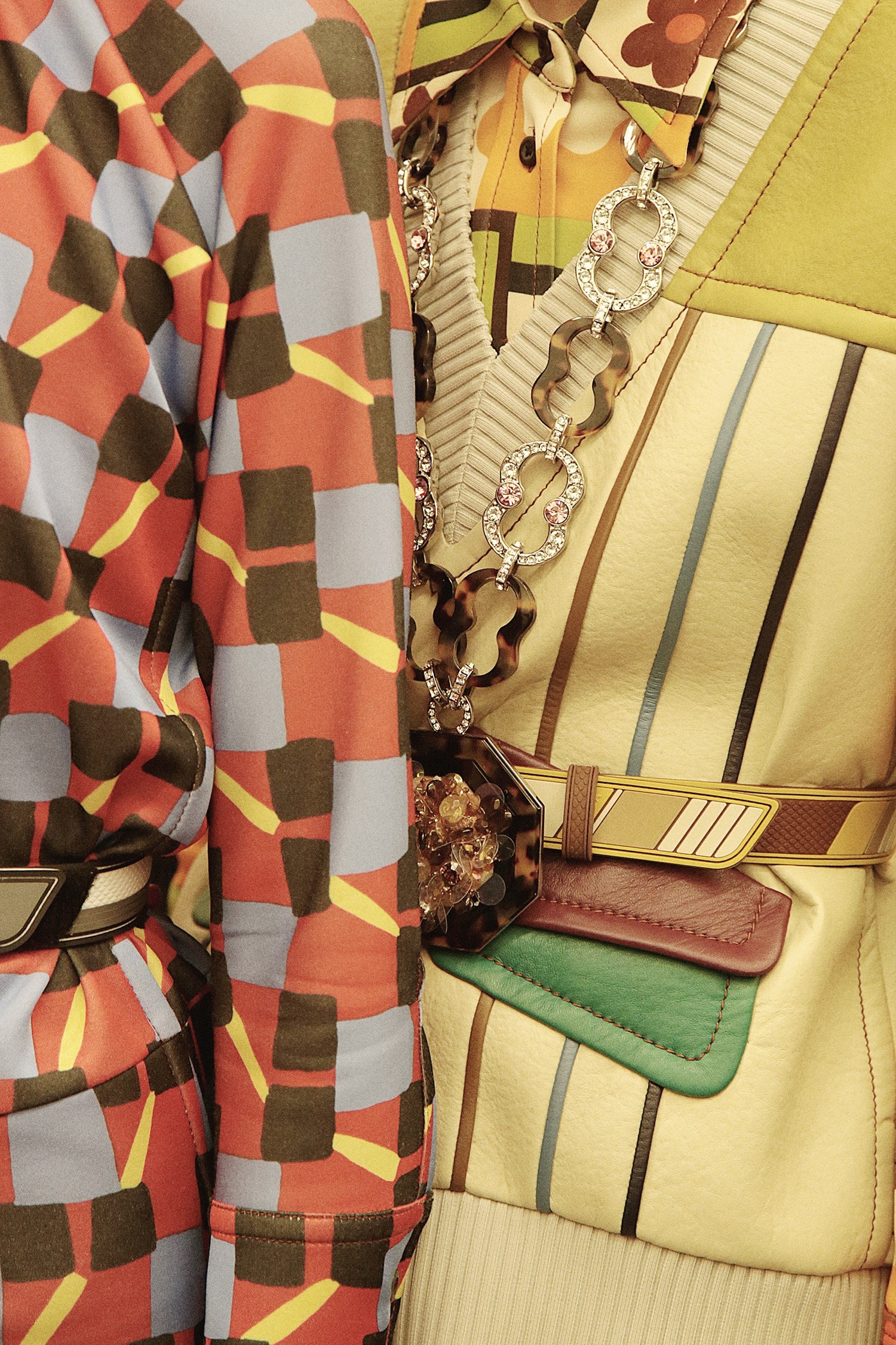
Bits of Fluff
Only adding to the vaguely disorienting effect that so masterfully held up a mirror to modern femininity, S/S17 presented an exploration of the clichés of the woman’s wardrobe. The colour pink, the aforementioned lingerie details, lace, embroideries, florals, silk chiffon and marabou sprouting everywhere, from bra tops to sturdy sandals, were all very much in evidence. Maybe more than ever before, Miuccia Prada juxtaposed these with unlikely fabrications and shapes. There was nothing aggressive about her treatment of these staples of the couture atelier. Instead, this was a sweet, even tender, and ultimately optimistic understanding of a love of decoration, one which acknowledged the need for fashion to embrace a certain whimsy and frivolity without ever seeming undignified. Quite the opposite in fact. “At the moment we need fashion that is intimate, real, more sensitive somehow,” concluded Prada. “But I tried to make it in a way that is contemporary, to make it relevant for today.”
